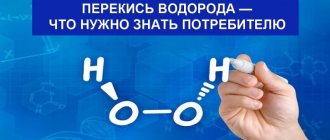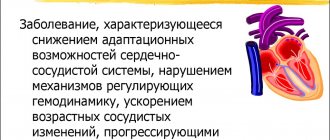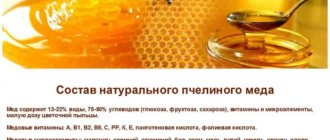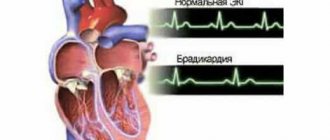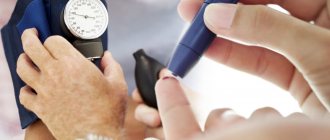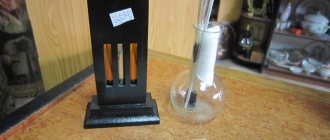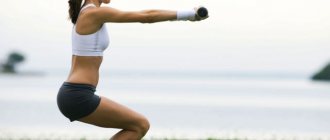Due to its effectiveness, accessibility and simplicity, the Neumyvakin method of treating hypertension is very relevant in the modern rhythm of life. The human circulatory system is a complex branched network of arteries, veins, vessels and capillaries. This system, under the influence of various unfavorable factors, becomes slagged, which leads to various pathologies. Despite the fact that pharmacology offers a wide range of drugs for high blood pressure, unfortunately, they cannot always help.
General information about the disease
Gouty arthritis is a systemic metabolic disease associated with the deposition of uric acid salts in articular and periarticular tissues. Men get sick more often after 40 years of age. In women, gout is less common and begins later - in the postmenopausal period after 50-60 years. In total, gout affects about 2.5% of these populations. With age, this percentage increases significantly and by the age of 80 it is 9% in men and 6% in women. The ICD-10 code is M10.
Gouty arthritis is comorbid (often combined) with kidney diseases and chronic renal failure, cardiovascular diseases (angina pectoris, high blood pressure), type 2 diabetes mellitus, and obesity.
Despite the fact that treatment for this disease has been developed, it is not always possible to keep gout attacks under control. This mainly occurs due to patients’ misunderstanding of the mechanism of development (pathogenesis) of gout and refusal or irregular maintenance therapy.
Read more about arthritis, its symptoms and treatment in this article.
Treatment of hypertension using the Neumyvakin method
The whole essence of the treatment method is to use just one component - hydrogen peroxide. Dr. Neumyvakin believes that this substance:
- improves blood viscosity and its composition;
- increases immunity;
- improves vascular tone;
- cleanses the blood from the formation of blood clots;
- removes all toxins from the body;
- eliminates agents that contribute to the development of diseases;
- normalizes blood pressure.
The scientist is of the opinion that peroxide can and even should be used as the main medicine for a wide variety of diseases - from hypertension to diabetes and infections. Perhydrol must be taken internally according to a specially designed regimen, gradually increasing the dosage.
Treatment of hypertension using the Neumyvakin method is one of the effective and popular methods
Regardless of what disease a person suffers from, a general regimen for taking hydrogen peroxide is provided. Because of this, one gets the impression that perhydrol is a real panacea and a cure for all known and unknown diseases.
Despite everything, the treatment of hypertension according to Neumyvakin has many adherents. All of them unanimously claim that they completely got rid of the disease very effectively and in a short period of time only thanks to hydrogen peroxide. Everyone decides for themselves what this effectiveness of the technique is due to - self-hypnosis or the unique properties that peroxide has.
Cause and mechanism of development (etiology and pathogenesis) of the disease
The cause of gouty arthritis is a disorder of purine metabolism. Purines are chemical compounds that form the basis of nucleic acids necessary for the formation of DNA and RNA molecules. As cells break down, purines are broken down into uric acid (UA). The latter enters the intercellular space and into the blood plasma, where it combines with sodium, forming a salt - monosodium urate (MUN).
An increased level of urate in the blood (hyperuricemia - GU) may be a consequence of a genetic predisposition (the kidneys do not eliminate MUN completely), high blood pressure (BP), consumption of large amounts of animal food, and alcohol.
With an excess of urates, when they can no longer dissolve in the surrounding fluid (EOR concentration more than 0.4 mmol/l), the salts crystallize, deposit in the articular and periarticular tissues and are surrounded by protein rings. This formation is called tophi. The release of MUN from the tophi causes an immunological reaction: a large number of neutrophils (one of the types of leukocytes responsible for cellular immunity) appear in the synovial membrane and joint fluid.
Neutrophils ingest MUN crystals, which causes the release of proinflammatory (inflammation-causing and maintaining inflammation) cytokines and the development of an acute inflammatory response in the synovium. Acute attacks in the form of synovitis are very painful, but do not leave any consequences. The long-term chronic course of the disease with frequent repeated attacks leads to the destruction of articular cartilage, proliferation of bone tissue, deformation and dysfunction of the joint. Deposition of MUN in the kidneys causes a decrease in their function.
Factors contributing to increased urate levels in the blood:
- the presence in the diet of a large number of meat dishes, offal, eggs, alcoholic beverages,
- overweight;
- taking certain medications - diuretics, aspirin, nicotinic acid, medications to lower blood pressure (Concor), etc.;
- lead poisoning;
- increased breakdown of purines in blood diseases, psoriasis, etc.;
- increased formation of purines;
- impaired renal function and uric acid excretion.
Classification
Based on the causes of occurrence, gouty arthritis is divided into forms:
- primary
– associated with hereditary characteristics of purine metabolism and excretion of MUN by the kidneys; - secondary
– the cause of development is some other diseases, nutritional disorders, bad habits, etc.
According to the mechanism of accumulation of MUN, gout is divided into types:
- metabolic
– increased internal production of purines during their normal excretion by the kidneys; - renal
– impaired excretion of uric acid by the kidneys; - mixed
.
By severity:
- mild course
- attacks of gouty arthritis no more than 2 times a year with damage to no more than two joints; single tophi no more than 1 cm in diameter; there are no complications from the kidneys or impaired joint function; - moderate severity
- no more than 5 attacks per year affecting no more than 4 joints with minor changes in cartilage and bone tissue; a large number of small tophi; stones in the kidneys; - severe
– attacks of gouty arthritis more than 5 times a year, multiple large tophi and arthritis; decreased kidney function.
Symptoms of gouty arthritis
The appearance of the first symptoms of gouty arthritis is sometimes preceded by a long-term increase in the concentration of urate in the blood. Therefore, men after 40 years of age, and women after menopause, need to periodically check the content of uric acid salts (UA) in the blood. This is especially important for those who have close relatives suffering from gout. Gouty arthritis develops when the concentration of urate in the blood exceeds 0.4 mmol/l. But with such an indicator, arthritis manifests itself only in a fifth of patients; the rest may not be aware of their risk of developing gout.
Primary signs
The first attack of acute gouty arthritis begins suddenly. Sharp pain appears in the affected joint, the tissue over it swells, and the skin turns red. The pain is very strong. The body temperature may rise and the general condition of the patient may be disrupted.
Severe pain in the affected joint, high body temperature and poor condition of the patient are the first signs of gouty arthritis.
In half of the cases, gouty arthritis begins with damage to one joint. This is usually the first metatarsophalangeal joint of the foot. The knee, elbow, small joints of the hand, etc. may also be affected.
Symptoms of gouty arthritis are especially pronounced at night.
Obvious symptoms
The attack of gouty arthritis lasts from 2 days to 2 – 3 weeks. Then complete remission occurs without any consequences. The next attack usually develops within a year, but sometimes remission lasts several years.
Acute gouty arthritis can recur over a number of years, but gradually its course becomes chronic. Several joints are asymmetrically affected, including the first metatarsophalangeal joint on the lower extremities.
Under the skin on the extensor surface of the joints, as well as in the area of the ears, tophi appear - small superficial nodules or larger subcutaneous nodes with a cartilaginous consistency. They are painless, but can become inflamed during an exacerbation of gouty arthritis. In this case, they become painful and sometimes break through to the surface of the skin in the form of a whitish mass.
Attacks of urolithiasis may occur - urates are deposited on the walls of the urinary tract, as well as in the kidneys, which leads to disruption of their function.
When you need to see a doctor urgently
You should seek medical help if:
- joint pain appeared, accompanied by severe redness and swelling of the tissues; body temperature increased, chills and malaise appeared;
- severe paroxysmal pain appeared in the lower back - an attack of urolithiasis;
- joint pain also bothers you during the interictal period - a sign of the chronic course of gouty arthritis.
Stages of gouty arthritis
Gouty arthritis occurs in 4 stages:
- Asymptomatic
- Increased levels of MUN in the blood without the presence of crystals and gout attacks. - Asymptomatic
- increased levels of MUN in the blood with the presence of crystals in the synovium and joint fluid, but without signs of gouty arthritis and the presence of tophi. - Intermittent
- deposition of MUN crystals in tissues in combination with attacks of acute gouty arthritis. - Chronic tophi
- the presence of tophi in articular and periarticular tissues in combination with chronic arthritis, destruction of cartilage tissue, impaired joint function and kidney damage.
Any form of arthritis has serious complications, so you should not delay treatment.
See how easily the disease can be cured in 10-12 sessions.
If gouty arthritis is not treated
If you suspect gouty arthritis, you should immediately contact a rheumatologist. The disease requires treatment, both during an attack and in the interictal period. The main reason why the development of gout attacks cannot be brought under control is the refusal of patients to undergo treatment in the inter-attack period, which inevitably leads to:
- hyperuricemia – increased urate levels in the blood;
- resumption of attacks of gouty arthritis;
- transition of acute gouty arthritis to chronic;
- joint destruction and disability;
- severe complications from the kidneys and cardiovascular system.
What to do during exacerbations
If severe joint pain occurs in combination with severe swelling and redness of tissues, increased body temperature, and malaise, you should:
- take any sedative + medicine from the group of non-steroidal anti-inflammatory drugs (NSAIDs) - Diclofenac (oral tablet or rectal suppository), Ibuklin, Nise, etc. Apply ointment or gel from the same group (Voltaren, Pentalgin, etc.) to the skin over the sore joint. ;
- call a doctor at home;
- lie down and take a position that minimizes joint pain.
Drugs for the treatment of exacerbation of gouty arthritis
External use of baking soda for high blood pressure
Baking soda can be used externally. This enhances the effect of the solution taken orally.
Baths and compresses
Compresses reduce blood pressure, relieve headaches and dizziness. Add 2 tsp to a glass of warm water. soda, moisten the cloth, apply to the back of the head and temples, hold for 15 minutes.
Baths are done before bedtime. Add two packs of soda to one bath, water temperature 60 0C. The duration of the procedure is 15-20 minutes. You can add 5 drops of mint essential oil. This will calm the nervous system and improve sleep. Water procedures are not carried out in case of exacerbation of skin diseases: neurodermatitis, ulcers, severe burns, cuts.
Cleansing enemas
Soda enemas accelerate the removal of fluid and cleanse the body of toxins and waste.
The procedure is carried out in three stages:
- Using an Esmarch mug, 2 liters of clean, warm water (not higher than 400 C) are injected into the rectum, held for 10 minutes, and the intestines are emptied.
- Prepare a soda solution: add 1 tbsp to 1 liter of warm water. l. soda, stir well, inject into the rectum, hold for 10 minutes, empty the intestines.
- Next, another 2 liters of clean, warm water are introduced. Also hold for 10 minutes and empty the intestines.
The procedure is carried out daily for 5 days in a row. Cleansing enemas are contraindicated for hemorrhoids, rectal bleeding, rectal cancer, dehydration, and infectious diseases.
Localizations
With gout, gouty arthritis of the joints of the lower extremities most often develops. There may be other localizations, including damage to the joints of the upper extremities. Gout is also characterized by asymmetrical joint lesions.
Gouty arthritis of the lower extremities
During a primary gouty attack, the pathological process in half of the cases involves the 1st metatarsophalangeal joint of the foot. And even if this joint is not the first to be affected, gouty arthritis will still develop in it later. The periarticular tissues swell, the skin turns red. Subsequently, small and large tophi appear on the dorsum of the foot.
Gouty arthritis of the ankle is less common and most cases occur with repeated attacks. The ankle becomes inflamed, swollen and red, and the inflammation spreads to the heel. There is severe pain and the inability to step on the foot.
The knee is often affected, the lesions are asymmetrical, often combined with lesions of the 1st metatarsophalangeal and elbow joints. Severe pain, swelling and redness are initially combined with impaired limb function due to pain, but with prolonged gout, joint deformation and ankylosis (immobility) occur.
Hip gouty arthritis is rare and the redness and swelling are not so noticeable under the thick layer of muscles and ligaments. But the pain can be severe.
Chondroprotectors: what are they, how to choose, how effective are they?
Joint pain at rest
Gouty arthritis of the upper extremities
The small joints of the hand and fingers often become inflamed, and the fingers become like sausages. The pain, inflammation and swelling are very severe. Large tofuses appear on the back of the hand.
The elbow is no less often affected. The lesions are asymmetrical and are often combined with the involvement of small joints of the hand and foot. Small and large tophi appear on the extensor surface of the shoulder and forearm.
Brachial gouty arthritis develops much less frequently, but is painful. Swelling and redness are not expressed, tophi appear on the flexor surface of the shoulder.
Lesions in gouty arthritis of the upper extremities are usually asymmetrical
Tofus lesion of the spine
In the mid-50s of the last century, spinal damage due to gout was first identified. In this case, tophi grow in the soft tissues and joints of the spine with the destruction of their structures.
The lumbar region is most often affected, followed by the cervical region. Pain appears in the back, which is often mistaken for symptoms of osteochondrosis. When the vertebrae are destroyed and the spinal nerves and spinal cord are compressed, neurological symptoms appear. When the cervical spine is affected, this results in paresis and paralysis of the upper limbs, and radicular pain.
When the lumbosacral region is affected, it can be complicated by compression of the final part of the spinal cord - the cauda equina. In this case, the function of the pelvic organs is disrupted - involuntary urination, defecation, and potency disorders occur.
Breathing according to Neumyvakin for hypertension
Breathing exercises according to Neumyvakin are an ideal way to improve your health. This method is very effective for hypertension, headaches, multiple sclerosis, bronchial asthma and other diseases. As a rule, the main carrier of molecular oxygen from the lungs directly to the tissue is hemoglobin, which is contained in red blood cells. In case of certain failures, the body produces very little carbon dioxide, and oxygen starvation occurs.
There are different treatment options, but Ivan Pavlovich offers time-tested and practice-tested breathing techniques himself developed for the treatment of arterial hypertension.
Method No. 1
- Short inhale, short exhale - hold your breath for 15-30 seconds. or longer. If you feel that it is becoming difficult to hold in air, you need to exhale the remaining oxygen from your lungs. Breathe for 1-2 minutes. and repeat everything again.
- Every day you need to increase the interval of holding your breath.
- This breathing exercise for hypertension should be done once every hour.
- Gradually reach the maximum, so that in total for the whole day, holding your breath is up to 30 minutes.
Method No. 2
For this method you will need the simplest plastic food bag.
- Place the bag over your face so that your chin and mouth are tightly closed.
- You need to inhale into the bag and exhale there without tension or effort, i.e. your normal breathing. The bag produces carbon dioxide needed by the body.
- At first, breathe in this way for no more than half a minute. Gradually, with each approach, increase to 2 minutes, but no more than 1 approach.
In the video, Ivan Pavlovich Neumyvakin answers questions about breathing exercises for hypertension.
If you follow the rules, conditions favorable for the absorption of oxygen are formed during inhalation. At the same time, thoracic pressure becomes positive and abdominal pressure becomes negative. By holding your breath as you exhale, everything happens exactly the opposite. Thus, the abdominal cavity and chest work as a pump, which helps improve the outflow of venous blood from the lower extremities to the heart. In turn, this eliminates many problems with hypertension.
Diagnostics
Despite the fact that gouty arthritis has pronounced symptoms, only 10% of patients can be correctly diagnosed during the first attack. In other cases, a diagnosis of other types of arthritis is made. Diagnostic criteria for gout are:
- acute arthritis of the 1st toe;
- the presence of large and small tophi;
- increased levels of uric acid in the blood;
- detection of EOR crystals in joint fluid and tissues.
If at least two criteria are identified, the diagnosis of gouty arthritis is considered reliable.
Laboratory research:
- general blood test
- signs of inflammation; - biochemical blood test
- uric acid content more than 0.32 mmol/l; increased levels of C-reactive protein (a sign of an inflammatory reaction); - general urine analysis
; - examination of synovial fluid using polarization microscopy
- identification of MUN crystals and a large number of leukocytes.
Instrumental studies:
- Ultrasound of joints
- detection of EOR crystals on the surface of cartilage and tophi; - radiography of the joints
- in the early stages there are no changes; later, bone changes are revealed; - computed tomography (CT)
- reveals the presence of changes in the spine.
Treatment of gouty arthritis
The goal of treatment for gouty arthritis is to improve disease outcomes. For this purpose, mainly medicinal treatment methods are used. Non-drug methods are of auxiliary value.
Drug treatment
The main objectives of drug treatment of gouty arthritis are:
- relieving inflammation and pain in acute arthritis;
- preventing attacks of arthritis by reducing uric acid in the blood.
Treatment of an acute attack of arthritis
The following drugs are used to relieve an attack of gouty arthritis:
- Colchicine
is a dry extract of autumn crocus seeds. Available in tablets. Effective in the first 12 hours from the onset of a gout attack. The result of its use is the elimination of swelling and pain. The drug is prescribed in small dosages. The daily dose is divided into several doses. First, most of the daily dose is prescribed, then an hour later - a smaller one. If necessary, the dose can be repeated several times a day. A day after the onset of an attack, minimum dosages cannot be used; they are increased, which contributes to the manifestation of side effects, mainly from the gastrointestinal tract. All dosages are selected by the doctor. - Nonsteroidal anti-inflammatory drugs (NSAIDs)
– relieve inflammation, pain and swelling. These drugs are divided into 2 groups: non-selective and selective. Non-selective or 1st generation NSAIDs suppress the action of biologically active substances - prostaglandins, which support inflammatory processes. But they do not act selectively, also suppressing the action of prostaglandins that protect the gastric mucosa. Therefore, drugs such as Diclofenac, Indomethacin, Ibuprofen have side effects from the gastrointestinal tract (GIT). However, they are suitable for some patients and are often prescribed, both orally and intramuscularly. Selective NSAIDs (Nimesulide, Etoricoxib, Celecoxib) belong to the second generation. They act selectively on pro-inflammatory prostaglandins and have almost no effect on the gastrointestinal tract. The selection of the drug is carried out individually, in accordance with the characteristics of the patient’s body. - Glucocorticoid hormones (GCs)
- quickly relieve inflammation, pain and swelling, but are not suitable for everyone, as they can increase blood pressure, blood sugar and cause exacerbation of peptic ulcer disease. Prescribed in short courses orally (Prednisolone), intramuscularly (Betamethasone), in the form of intra-articular injections. Currently, they are trying to use mainly drugs from the NSAID group and only if there are contraindications for their use, GCs are used. - Canakinumab (trade name Ilaris)
is a monoclonal antibody to interleukin-1beta (IL-1b). IL-1b is a messenger protein molecule (cytokines) responsible for the inflammatory response. Antibodies bind to IL-1b and neutralize its action, which leads to the elimination of inflammation and pain. Canakinumab is used in an individually selected dosage for patients who have contraindications to the use of Colchicine, NSAIDs and GCs.
Drugs for the treatment of gouty arthritis
Decrease in uric acid levels in the blood during the interictal period
Outside of attacks, patients suffering from gouty arthritis are prescribed long-term courses of urate-lowering therapy (UST), which lower the content of uric acid (UA) in the blood serum, preventing the formation of UA crystals in tissues. With a low content of uric acid in the blood, the crystals already present in the tissues gradually dissolve. In the presence of chronic gouty arthritis and tophi, the UA content is reduced to a minimum (below 0.3 mmol/l), which contributes to the accelerated elimination of tophi. In the absence of tophi, an acceptable UA content of 0.36 mmol/l is acceptable.
For urate-lowering therapy for gouty arthritis, the following groups of drugs are used:
- A group of drugs that interfere with the formation of uric acid. They suppress the action of the enzyme involved in the formation of uric acid. When prescribing them, constant monitoring of UA content in blood serum is necessary. These medications include:
- Allopurinol is a drug that has been used to treat gout for more than 50 years. It is prescribed in long courses 2 weeks after the end of a gout attack with small doses, which are gradually increased to the required levels. Sometimes it gives side effects from the kidneys, liver, severe allergic skin reactions. At the initial stage of treatment, it often causes an exacerbation of gouty arthritis, so it is combined with the prescription of NSAIDs.
- Febuxostat (trade names: Adenuric, Azurix) is a more modern drug of this group; it acts selectively on only one enzyme involved in the synthesis of uric acid. It does not inhibit other enzymes, so it has fewer side effects. It works softly and effectively. Doses are selected individually and initially combined with the use of NSAIDs.
- Drugs that enhance the excretion of sUA through the kidneys. Prescribed for intolerance to drugs of the first group or ineffectiveness of their use:
- Probenecid - prescribed in long courses, contraindicated in the presence of kidney stones.
- Enzymes that are absent in humans can reduce the level of sUA in the blood. The enzyme uricase is present in the blood of some mammals and reduces the level of UA in the blood, but it is not present in human blood. The drug rasburicase (recombinant bacterial uricase) was produced using genetic engineering from bacteria, which is used for gouty arthritis if other methods fail to reduce UA in the blood. The disadvantage of the drug is increased allergenicity, so it is used strictly according to indications.
Peguricase is a uricase with polyethylene glycol, which suppresses increased allergenicity. A more modern drug, but it is also used strictly according to indications.
Crunching in joints - when to worry
Intra-articular injections of hyaluronic acid
Non-drug treatment
This type of treatment includes:
- diet;
- control over the course of comorbid (often combined with gout and aggravating its course) diseases;
- physiotherapeutic procedures;
- folk remedies.
Diet for gouty arthritis
Patients suffering from gouty arthritis should not consume foods rich in purine bases. But recent studies have found that only animal products have a negative effect. This is fatty red meat, offal (liver, kidneys, heart, brains), strong meat broths, canned fish in oil, canned meat and pates.
On the contrary, plant foods containing purine bases should not be completely excluded from the diet. These are nuts, peas, beans, lentils, legumes, cocoa and coffee. Dairy-vegetable diets with low-fat dairy products, a variety of vegetables and fruits are very useful. Especially useful are foods rich in vitamin C, which helps eliminate uric acid.
Alcohol should be excluded from the diet: strong spirits and beer, including non-alcoholic beer. Only a small amount of dry wine is allowed. You should not consume sweets, baked goods, and especially sweet carbonated drinks. It is also necessary to stop smoking.
Monitoring the course of comorbid diseases
Gouty arthritis is often combined and aggravated by obesity, diabetes mellitus, cardiovascular and kidney diseases.
Obesity requires constant monitoring of body weight. This includes following a diet with a reduced daily caloric intake, an active lifestyle, and courses of therapeutic exercises.
Diabetes mellitus also requires constant monitoring, laboratory monitoring and supportive treatment.
Frequent concomitant diseases with gouty arthritis are also arterial hypertension (consistently high blood pressure) and coronary heart disease with angina attacks. Currently, there are medications that can stabilize the condition of such patients, but this requires constant monitoring by a cardiologist.
Any renal pathology also complicates the course of gouty arthritis. She also needs to be observed and treated.
Physiotherapeutic procedures
Physiotherapy is an additional treatment for gouty arthritis. During a gouty attack, electrophoresis with glucocorticoid hormones and ultraviolet irradiation of the affected area are prescribed.
Electrophoresis with glucocorticoid hormones and ultraviolet irradiation are used to treat gouty arthritis.
During the period of remission, courses of magnetic and laser therapy are prescribed to improve blood microcirculation and restore damaged joint tissue.
In the absence of gout attacks, sanatorium treatment can be carried out for six months. The Caucasian Mineralnye Vody and Crimea sanatoriums are suitable.
Read about other methods of treating arthritis in this article.
Folk remedies
To relieve inflammation, swelling and pain during a gout attack, traditional medicine recommends compresses with activated carbon. Previously, charcoal was used for this purpose, today it is enough to take 50 tablets of activated carbon, crush, dilute with water to the consistency of homemade sour cream, add a tablespoon of vegetable oil, mix and apply to the inflamed area, apply a napkin, compress paper, cotton wool on top, bandage and leave all night long. Perfectly relieves inflammation, swelling, reduces pain.
Surgery
For large tophi, which often suppurate and compress surrounding tissues, disrupting their function, they are removed.
Surgical operations aimed at restoring joint function are carried out strictly according to indications, in case of destruction of cartilage tissue, proliferation of bone tissue with articular deformation and loss of limb function. If the joint is completely destroyed, it is replaced with an artificial one (endoprosthetics).
How to use baking soda for health benefits
Effective reduction of blood pressure with the help of soda can only be achieved if it is used correctly:
- Soda for high blood pressure is taken three times a day. The first time the drug is taken in the morning, on an empty stomach. The second and third every 4 hours.
- The soda solution is taken half an hour before meals. Soda neutralizes the acidity of gastric juice, which worsens and slows down the digestion process.
- Dissolve in water or milk; they cannot be replaced with tea, coffee, or juices. Temperature is important to activate medicinal properties. Ideally, the powder should be diluted with boiling water and then brought to the desired volume with cold water.
- You can take the powder, but be sure to drink it with a glass of warm water.
- Reception begins with small dosages - first a quarter of a teaspoon at a time. The dose is increased gradually. The maximum amount should not be more than 3 tsp. in a day.
- Soda is not taken to prevent hypertension. Undesirable side effects are possible. For example, “acid rebound,” when too rapid alkalization causes increased production of hydrochloric acid.
- You cannot use soda to relieve a hypertensive crisis.
Although it accelerates the removal of fluid, it cannot eliminate its excess instantly. Taking a soda solution will increase the load on the heart, which will only worsen the patient’s condition.
Soda solution has a very specific taste; it can be improved with honey; adding sugar is not recommended.
Approach to the treatment of gouty arthritis at the Paramita clinic
Our clinic has developed a unique method for treating gouty arthritis. There are two opposing approaches to identifying and treating this disease. First of all, a thorough clinical, laboratory and instrumental examination of the patient is carried out. After establishing the final diagnosis and concomitant diseases, individually selected comprehensive treatment is prescribed, including:
- modern Western techniques, including the use of the latest medications; this allows you to eliminate inflammation and pain during a gout attack and maintain the desired level of uric acid in the blood serum during the inter-attack period;
- traditional oriental techniques that have a regulating effect on the body as a whole and on the site of inflammation; techniques allow you to eliminate pain after the first session; After the course of treatment, the patient feels a surge of strength and complete renewal.
We combine proven techniques of the East and innovative methods of Western medicine.
Read more about our unique method of treating arthritis
A completed course of treatment and properly selected urate-lowering therapy allows the patient to forget about gout attacks for a long time (in most cases until the end of life). You can get more detailed information about treatment at the clinic on our website.
Treatment of hypertension with hydrogen peroxide: scheme
People who are absolutely sure that this technique is effective, and who are determined to use it, must strictly follow all the doctor’s recommendations. In any case, Neumyvakin is a doctor, and his technique was developed in such a way as to minimize the risk of negative consequences for the human body. This is only possible with full compliance with the recommendations and dosage regimen.
Treatment of Neumyvakin hypertension is carried out according to the following scheme:
- on the first day of the treatment course, you need to take one drop of the substance, after diluting it in a glass of plain water;
- the second day is no different from the first, except for increasing the dosage to two drops;
Professor Neumyvakin invented a treatment method, the rules of which must be followed
- the whole scheme is practiced for ten days, that is, the number of drops of hydrogen peroxide should increase every day. On the tenth day of the course, the patient needs to drink ten drops of the product;
- treatment is not carried out from the 11th to the 18th day. In no case should you allow the body to be poisoned with a large amount of a substance; this is precisely why such a break is taken. During this period of time, peroxide begins to act very actively, normalizing the process of eliminating waste and toxins, and also killing all pathogenic microorganisms;
- from the 19th to the 21st day, the doctor recommends taking 3 drops of the medicine, still diluting it with water;
- this is followed by three days of rest, and then the resumption of the course;
- This alternation must be done until the symptoms of hypertension completely go away.
On average, treatment of hypertension with hydrogen peroxide according to Neumyvakin can take from 40 to 50 days. As practice shows, soon after completing the course, blood pressure levels decrease and gradually return to normal.
General clinical recommendations for patients with gouty arthritis
All patients suffering from gout are advised to:
- follow a diet, lead an active lifestyle;
- follow all doctor's orders, including taking prescribed urate-lowering medications;
- monitor your weight;
- treat concomitant diseases: diabetes, obesity, angina pectoris, high blood pressure, chronic kidney disease.
Prevention of gout
Gout is most often associated with hereditary metabolic characteristics. There are also no factors predisposing to the development of this disease. If you eliminate their influence, then even if you have a family history, you can significantly reduce the risk of developing the disease. To do this, you need to follow the following recommendations:
- do not overeat, reduce the calorie content of your daily diet, do not consume offal, red meat, alcohol, quit smoking;
- get rid of excess weight;
- Take any medications in consultation with your doctor - some of them increase the concentration of uric acid (diuretics, nicotine, acetylsalicylic acid, etc.);
- regularly treat chronic diseases: diabetes, obesity, kidney and cardiovascular diseases;
- men over 40 years old, and women over 50, periodically check the level of uric acid in the blood.
Beneficial features
Soda - used in everyday life, cooking, medicine. Traditionally, soda solution is used to disinfect the oral cavity, relieve toothache, and for sore throat, pharyngitis, rhinitis, and conjunctivitis.
But the range of therapeutic effects of the drug is much wider; it can be used for such conditions as:
- arrhythmia;
- increased thrombus formation;
- helminthiases;
- constipation, hemorrhoids;
- swelling;
- heartburn, stomach pain;
- metabolic acidosis;
- gout, joint pain;
- high blood pressure;
- pneumonia.
In people suffering from diabetes, an acid-base imbalance is dangerous for the development of diabetic coma. In critical situations, a soda solution helps stop an attack and reduce the risk of complications.
Frequently asked questions about the disease
Is it possible to get disability?
For chronic tophi gouty arthritis with impaired joint function.
Which doctor treats you?
Rheumatologist.
What prognosis do doctors usually give?
With proper systematic treatment under the supervision of a physician, the prognosis is favorable.
Gouty arthritis requires constant monitoring by a rheumatologist, urate-lowering therapy, diet and all doctor’s recommendations. If treated correctly, you can forget about gout attacks forever. Doctors at the Paramita clinic have extensive experience in treating gout. Contact us!
Literature:
- Fedorova A. A., Barskova V. G., Yakunina I. A., Nasonova V. A. Short-term use of glucocorticoids in patients with prolonged and chronic gouty arthritis. Part III. Frequency of development of adverse reactions // Scientific and practical rheumatology. 2009; No. 2. pp. 38–42.
- Eliseev M. S. Gout. In the book: Russian clinical guidelines. Rheumatology / Ed. E. L. Nasonova. M.: GEOTAR-Media, 2021. pp. 372–385.
- Rainer TH, Cheng CH, Janssens HJ, Man CY, Tam LS, Choi YF Oral prednisolone in the treatment of acute gout: a pragmatic, multicenter, double-blind, randomized trial // Ann Intern Med. 2016; 164(7):464–471.
- Reinders M., van Roon E., Jansen T., Delsing J., Griep E., Hoekstra M. et al. Efficacy and tolerability of urate-lowering drugs in gout: a randomized controlled trial of benzbromarone versus probenecid after failure of allopurinol // Ann Rheum Dis. 2009; 68:51–56.
Themes
Arthritis, Joints, Pain, Treatment without surgery Date of publication: 01/25/2021 Date of update: 02/02/2021
Reader rating
Rating: 4.54 / 5 (13)
